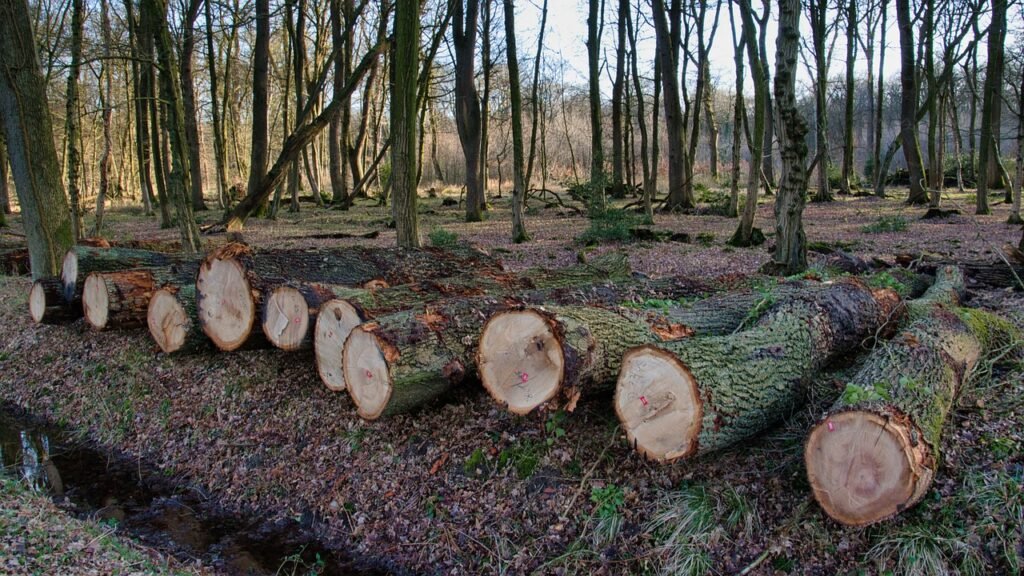The lush forests of our planet are home to an astounding variety of life, including some of the world’s most unique and irreplaceable species. However, these ecosystems are under siege from deforestation, a destructive force that threatens not only tree canopies but the very survival of extraordinary wildlife. Understanding why deforestation poses such a grave danger to these species is crucial in our efforts to preserve the planet’s biodiversity. This article delves into the multifaceted impacts of deforestation, its global reach, and the urgent need for action to safeguard these living treasures.
Understanding Deforestation

Deforestation refers to the large-scale removal of forested areas, often to make way for agricultural expansion, urban development, or logging. As trees are felled en masse, the delicate balance of forest ecosystems is disrupted. This not only results in habitat destruction but also impacts the broader environment through changes in carbon storage and water cycles.
Biodiversity Hotspots at Risk
Forests, particularly tropical rainforests, are biodiversity hotspots teeming with species found nowhere else on Earth. The Amazon, the Congo Basin, and Southeast Asian rainforests harbor countless unique species. These ecosystems are irreplaceable reservoirs of genetic diversity, and their loss means the disappearance of entire species and potential resources before they’ve been fully studied or understood.
The Impact on Endemic Species
Endemic species, those found exclusively in a particular region, are especially vulnerable to deforestation. With limited ranges and specialized habitats, these species often have nowhere else to go when their homes are destroyed. As forests vanish, so too do the niches that many endemic species critically depend on for survival.
The Role of Forests in Climate Regulation
Forests play a vital role in stabilizing the global climate. They act as carbon sinks, absorbing significant amounts of CO2 from the atmosphere. Deforestation not only reduces this critical function but also releases stored carbon, contributing to climate change. The ensuing climate shifts further threaten the delicate ecosystems and the species that rely on specific climate conditions to thrive.
Displaced Wildlife and Fragmented Habitats
As trees fall, the wildlife within them is either displaced or forced to live in fragmented habitats. Animals that once roamed vast, continuous forest tracts must navigate isolated patches of green or venture into human-dominated landscapes, where they face increased risks of predation, competition, and accidental deaths, such as roadkill.
Loss of Natural Ecosystem Services
Forests provide essential ecosystem services beyond habitat, such as water purification, soil erosion control, and air quality regulation. The degradation of these natural services impacts all life forms, including humans, who rely on healthy ecosystems for both direct resources and overall environmental health.
Conservation Efforts and Challenges
While conservation efforts are ongoing, they often clash with economic interests. Protected areas and sustainable management are critical strategies, yet their implementation is challenging in regions where deforestation is driven by immediate economic gains. International cooperation and innovative policies are needed to align conservation with sustainable development.
Technological Solutions and Innovation

Technology offers new hope in the fight against deforestation. Satellite monitoring, drones, and data analysis play increasingly important roles in tracking deforestation and informing policy decisions. These technologies can help enforce conservation laws and monitor previously inaccessible areas.
The Importance of Public Awareness and Education

Raising public awareness about the consequences of deforestation is paramount. Education initiatives can foster a global understanding of the link between forest protection and biodiversity conservation, urging communities to engage in responsible consumption and support reforestation efforts.
Conclusion

Deforestation presents an urgent threat to the world’s most unique species, jeopardizing fragile ecosystems and the multitude of life forms they support. By recognizing the vital importance of forests and understanding the comprehensive impacts of their loss, we can advocate for and implement effective conservation strategies. Protecting these irreplaceable habitats is not just about saving trees; it is about ensuring the survival of countless species that look to us for their future. With concerted global effort, we can strive for a world that values and maintains its natural heritage for generations to come.



